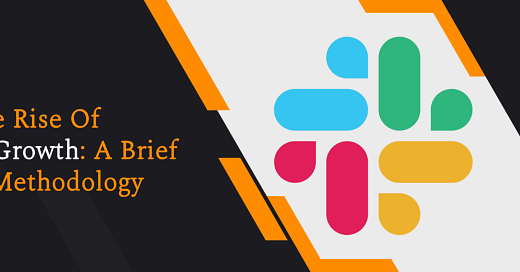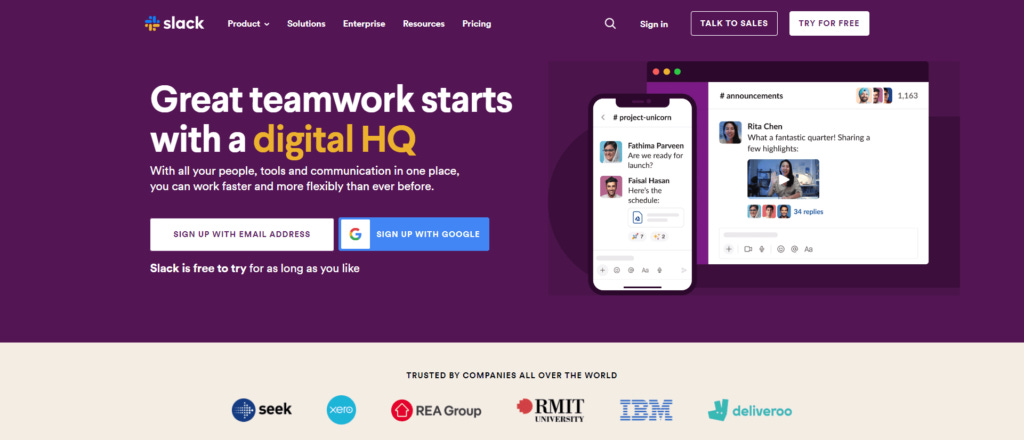Exploring the Rise of Product-Led Growth: A Brief History and Methodology
Let’s Start
In this blog, I will discuss Product-Led Growth(PLG). I will take you through a little journey of how product-led growth started. this is predominantly for tech companies.
History
1980s
If we look back around the 1980s, which was completely on-field sales, where a salesperson went from door to door, from one office to another giving the pitch and selling the products and services to the companies and people. This almost continued for two decades.
1990s
After that in the late 1990s telesales concept started where companies would actually call Potential Customers to sell the products. Here all the selling and interaction usually used to happen on the phones. This again happened for almost 10 years.
2000s
In early 2000 outbound sales started which actually came with the boom of outsourcing industries where some call center agents sitting in some part of the world would call other companies to sell the products and services of other companies by making cold calls and sending blast emails to the companies.
The late 2000s
In the late 2000s came content marketing where companies used to target sales via blogs, social media posts, Facebook, and Twitter.
2010s
In 2010 the automation of sales started and the companies started becoming more efficient in selling the products they focused more on the automation part, in channelizing the right way of doing the sales.
Now if we look at it, it is an era of product-led growth.
What is Product led growth?
I'm sure you must be wondering what exactly is this product-led growth. It's a very new and up-and-coming concept, so let me get you up to speed. So just by definition, Product-led growth is a business growth methodology where the product sits at the center of all the activities in an organization, this includes acquisition, retention, and expansion. It's been widely followed by tech companies and by saas or product-based companies. Basically, the product creates company-wide alignment for all the teams from engineering, sales, and marketing. Today product acts as the largest source of sustainable and scalable business growth.
How does it work?
How do product-led growth companies start with the acquisition model? It starts with the free or freemium Model. Meaning that companies provide the services to the users free of cost at the start of the service for a certain duration, for let's say, one month or two, and then they would charge the user.
So companies, at the time of onboarding, would typically give demos and free trials to the customer so that customers can actually use the product, take the feel of how it looks like, and experience the product on their own. At this stage companies minimize the cost friction, basically not giving any cost structure to the customers and onboarding them free of cost. They also focus on giving non-committal pricing which means that there are no conditions if they want to discontinue using the product.
It's all about creating a self-serve experience. It's an education mode where customers would sign up for the services independently with minimal or absolutely no product representative available to sign up. Customers are completely left alone to explore the products on their own. At the max, there are helper pages or chat services and FAQs in case of any questions or issues.
The product-led growth companies believe in giving immediate value to customers. Usually, these companies give early value rather than waiting for a long time for customers to get the advantage. Companies at this stage usually focus on getting initial feedback from the customers and from there on improving the product. They work on a continuous improvement method. This is a value-driven approach, once the customer gets enough value it will definitely create a network effect or a viral effect.
The best part about product led-growth is that it actually creates a viral effect. Users invite other users which also replaces, to a greater extent, the need for a big team of salespeople. The users typically act like a salesperson or a reference and the product itself becomes an expansion channel for the entire market.
Customer Backward Product
The first part is creating a customer backward product. What it means is that you need to start by focusing on solving the customer's problems meaning how this particular product is going to add value to the customer's life. Which gives a wow factor to the customers. At this stage, you should be very focused on giving benefits and giving a seamless customer experience. If this is achieved then, to a greater extent, you have done a great job.
The second very important step is creating simple and easy product navigation. The objective is to give a seamless customer experience and product navigation with absolutely zero friction. The onboarding process must be very simple and easy for the customer to utilize the services. The whole process is all about signing up the customers fast and focusing on how the customers are using the product.
Launching
At the launch of the product, you need to have a metric-specific goal. One most important metrics is growth or acquisitions. Companies are highly focused at this stage on the product data and the product data becomes a single source of truth for the entire organization.
The Network effect
Products should be built in a way that generates uber-level demand, also called the north star. Here users would invite other users to use the product at such a level that you can ditch the traditional sales channels of selling to the users. Rather you can utilize the product to generate demand or use it as an acquisition channel.
Example
These are some of the product-led growth companies. As we can clearly see that it is common among tech and SaaS companies. There are so many companies all over the world that are practicing product-led growth. Some of the companies which are very noticeable in terms of using the strategies are Pinterest, Zoom, Slack, Atlassian, Dropbox, Mailchimp, and many others.
Slack - The Product Led Growth Master
Let's take an example of a company that has actually mastered the art of product-led growth. Slack is one company that uses product features and usages as a primary driver for acquisition, retention, and for expansion.
Acquisition
Let's take a look at the acquisition strategy of Slack. Their main acquisition strategy is that it is free of cost for the customers at the start of the service. Their onboarding process is very smooth. There is absolutely no friction for the signup and Slack offers very easy navigation to the users to get them onboarded on the platform. They mainly focus on the customer journey. They are extremely focused on customer centricity. They believe in giving value to the customer at each and every step, which starts right at the acquisition step.
Retention
Slack actually has a unique way of retaining customers. The way the whole product has been built that it quickly becomes part of users' everyday life. The engagement rate is very high. Why? Because it replaces all the messaging, sharing, team collaboration apps, and all the other mediums in the organization and becomes one source of connection between all the employees and all the teams. Slack's retention rate is so high that it becomes extremely challenging nowadays for companies to replace slack with any other system.
Expansion
It is a referral model. If you look at the UI of slack it encourages users to invite other users in the organization and very perfectly they have created referrals, into a point system and gamification system. Within no time, Slack forms a community within the organization itself and people start inviting others, increasing their productivity. And that’s how they just use the current user base to onboard more users.
Product Led Growth Team Dynamics
Who are on the team and what do they do? Let’s start with the product.
Product Manager
Product is a very important function, as this team is highly focused on creating and building the product. Product managers keep customers at the center while they are building the product. Product managers are mainly responsible not only for building the product but also responsible for the entire customer life cycle. They are so focused that they believe in continuous improvement. They build the products or roll out the features in a way that makes the life of customers easy.
Engineering Team
Engineers are focused on delivering the overall experience to the customer journey, rather than just rolling out one single feature or a set of small features based on intuition. They're focused on a high-level goal of the organization. Tech teams usually run frequent sprints of two to three weeks or mini sprints to roll out features and practice improvement, rather than rolling out one major release of the features.
Sales Team
The sales team is also important for product-led growth companies. In fact, many people have a perception that product-led growth companies replace the sales team. In actual reality, it's not the case. It is something that product-led growth companies actually accelerate. The role of salespeople gets slightly changed. Instead of focusing on giving too much information to the customers or dumping too much information on the product, their role actually acts like consultants where they would cater to the customers' or the users' needs and understand their requirements at each and every step. They become a very important channel between the product and the customers or the users as a messenger. They ideally pass the message like what is the customer's requirement, what they need, or what kind of benefits they are looking for.
Marketing Team
The marketing team plays an extremely important role in terms of creating the promotion channels for the company. And the goal for marketers is to show the value that a product is going to create at each and every step of a customer journey. The entire idea for the marketing team is to earn the trust of customers by allowing them to use the product, obtain value and in the end fall in love with the product.
User Support Team
Product-led growth companies provide more of a self-serve mechanism in terms of solving any customer issues. So, that's why these companies have very holistic and very detailed helper pages and Q&A or FAQ pages so that the customers can solve their problems and are empowered in a self-service mode. The support team has goals around cross-selling and upselling the customer. They always look for opportunities among customers like how they can upgrade the customers to offer better services keeping value for money in mind.
Data Analysis or Business Intelligence Team
If you look at product-led growth companies like Pinterest, Dropbox, and Slack, one thing which is very common in these companies is that they are very data-driven. All the decisions that these companies take are based on the data. So, the only source of truth in the entire organization for a product-led growth company is the data. Hence, The business intelligence team would typically spend one-fourth of their time providing the right set of data to the product team, to the engineers, sales or marketing team, or any other team in the organization so that they can make the informed decision in terms of rolling out the right set of features and understand what the customer issues and problems are.
The Future
I can vouch for the fact that product-led companies are growth companies and are here to stay. If you look at the COVID situation, where the traditional sales channels are already being challenged, and more and more companies are moving towards the trend of product-led growth companies. And, in the end, it is all about go-to-market strategy and business growth that will really transform the business into the next level.













